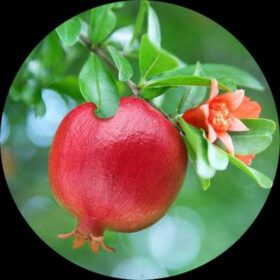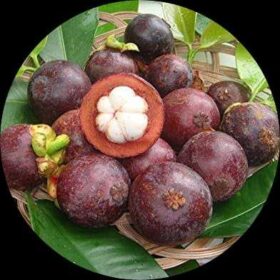- Empty cart.
- Continue Shopping
Jaboticaba Sabara
₹486.00Current price is: ₹486.00.₹750.00 Original price was: ₹750.00.
Genus : Plinia cauliflora
“Experience the exotic delight of Jaboticaba Sabara Fruit! This unique fruit plant bears grape-like fruits with a sweet and tangy flavor. With its distinctive appearance and luscious taste, it’s a must-have for fruit enthusiasts and gardeners. Don’t miss the opportunity to grow this extraordinary fruit plant in your own garden. Order now and savor its delicious harvest!”
Add to cart
Categories: Exotic Fruit Plants, Fruit Plants, Jaboticaba, Low Maintenance, Low Sensitive
Tags: delicious fruit, exotic fruit, Fruit Plant, Gardening, Jaboticaba Sabara Fruit, online shopping
Jaboticaba Sabara, also known as Plinia jaboticaba, is a fruiting tree that is native to Brazil. It is known for its unique growth habit, with fruiting directly on the trunk and branches, and its delicious and sweet fruits. Here is a more detailed description of Jaboticaba Sabara:
- Plant: Jaboticaba Sabara is a small to medium-sized evergreen tree that can grow up to 10-15 feet (3-4.5 meters) in height, although it can be pruned to maintain a smaller size. The tree has a dense, rounded canopy with dark green, glossy leaves that are elliptical or oblong in shape, and typically measures 1-2 inches (2.5-5 cm) in length. The trunk and branches of Jaboticaba Sabara have a unique appearance, as they are covered with a thick, rough, and cork-like bark, from which the fruit emerges directly.
- Flowers: Jaboticaba Sabara produces small, white or cream-colored flowers that are borne directly on the trunk and branches of the tree. The flowers are typically small, measuring about 0.5 inch (1.2 cm) in diameter, and are pollinated by insects. The flowers are followed by the development of the fruit.
- Fruits: The fruits of Jaboticaba Sabara are the main attraction of this tree. The fruits are grape-like, with a tough, leathery skin that ranges in color from dark purple to almost black when fully ripe. The fruits contain a sweet and juicy pulp with a unique flavor that is often described as a mix of grape, lychee, and plum. The fruits are typically 0.5-1 inch (1.2-2.5 cm) in diameter and contain several small seeds.
- Growth Habit: One of the unique features of Jaboticaba Sabara is its growth habit. The fruits develop directly on the trunk and branches of the tree, giving it a distinctive appearance. As the fruits mature, they can cover the entire trunk and branches, creating a stunning display. This growth habit makes Jaboticaba Sabara an interesting and unusual tree for landscaping and ornamental purposes.
- Habitat: Jaboticaba Sabara is native to Brazil and is typically found in the Atlantic Rainforest and other tropical and subtropical regions of South America. It grows well in warm, humid climates and is typically adapted to well-drained soils. Jaboticaba Sabara is typically grown in tropical and subtropical regions around the world as an ornamental tree and for its delicious fruits.
- Uses: Jaboticaba Sabara is primarily grown for its edible fruits, which are harvested and consumed fresh or used in making jellies, wines, liqueurs, and other culinary purposes. The unique growth habit of the tree also makes it a popular choice for landscaping and ornamental purposes, as it provides an interesting and unusual focal point in gardens and landscapes.
- Cultivation: Jaboticaba Sabara is typically grown in tropical and subtropical regions with warm temperatures and well-drained soils. It prefers full sun to partial shade and requires regular watering to keep the soil evenly moist. The tree is relatively low-maintenance, but may require some pruning to maintain its shape and size. It can be grown from seeds or propagated through cuttings, and it may take several years for the tree to start fruiting.
In conclusion, Jaboticaba Sabara is a unique and attractive fruiting tree known for its distinctive growth habit and delicious fruits. It is a popular choice for landscaping and ornamental purposes in tropical and subtropical regions, and its fruits are prized for their sweet and juicy pulp.
Add a review
Currently, we are not accepting new reviews
Related products
Bush Orange (Chinese Orange)
₹185.00Current price is: ₹185.00.0
















Reviews
There are no reviews yet